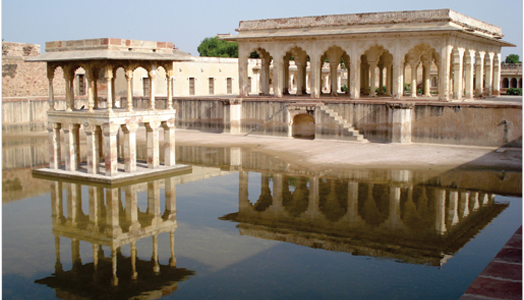By Savitha Hira
Photography: Courtesy Ar. Minakshi Jain
Ar. Minakshi Jain,
recognized as a leading authority on architectural conservation in India talks
to IAnD exploring the tenets and career options in the niche field that
celebrates historical influences in contemporary times…
As an architect and teacher
for over three decades, Ar. Minakshi Jain is highly recognized as the most
prominent conservation architect in India.
Her contribution to
conserving our heritage has been commendable to say the least. She has been
highly applauded for architectural conservation of the Nagaur Fort (UNESCO –
Asia Pacific Award of excellence), Amber Fort, Hawa Mahal, Jantar Mantar,
Gagraun Fort and many other heritage sites in Rajasthan. Incidentally, Nagaur
Fort was recently shortlisted for the Aga Khan Awards.
Having worked under
stalwarts like Charles & Eames Ray and Louis Kahn during the early years of
her career, Minakshi went on to lead projects ranging from low cost housing,
earthquake relief building work, to highly technical architectural conservation
of heritage structures.
Apart from her practice, Minakshi
has been a visiting faculty at CEPT, in Architecture and Urban Design for the
last 30 years. Alongside husband Prof. Kulbhushan Jain, she also runs the AADI
centre - an NGO for research in conservation studies, located in Ahmedabad.
IAnD in conversation with
Ar. Minakshi Jain - architect, urbanist, educator and writer …
What
prompted you to pursue a career in conservation architecture?
My first bachelor degree in
Architecture was from M.S.University, Baroda, in 1964. And my master’s degree
in Architecture was from University of Pennsylvania in 1966. I worked under
Architect Louis Kahn and Charles and Ray Eames between 1964 and 1965 at the
National Institute of Design. I have no formal education in conservation. Many
architectural projects of schools and residences were done between 1972 and
1985.
In early 1980s, I was involved in documentation and research
projects of the vernacular housing of India’s western arid
zone and Gujarat’s coastal
area, around that same time we (along
with Prof. K.B. Jain) also did lokshtra report for the old city of Jodhpur. So
there was an architectural and research base.
Since there was a
background of documentation and research, my first document on Fort of Nagaur
for Getty foundation was well received in 1993. From there started the
architectural conservation career. My
own interest was inspired and sustained by Mr. Gajsingh, MD of MMT, Mr. Mahendra Singh ,CEO of MMT( now
retired) and Mr. Kulbhushan Jain, my
husband. My career in architectural
conservation is self taught and helped by above mentors.
What
in your opinion is the difference in ‘thinking/ visualization’ between
conservation architecture and conventional architecture? What are the
challenges?
The main
difference, I think, in conservation, is the unwinding of architectural
understanding. A conventional architect has many options for design
in open free ground to create the form, volume, the surfaces, the spaces
according to the demands of time, clients’ brief, location etc., while the
conservation architect has the building in front of his eyes. He has to fully
understand the character, read the architectural language, style, history,
construction methods, availability of historic materials, and need for crafts
persons, if any, for the conserved, differed use.
Often a historic
building’s use has to change with the program of conservation. Private historic
master pieces are now open to public. For example, historic
buildings are often converted into museums, resorts, etc. This will be
considered as changed use. For the present and for the future, historic
buildings have to be integrated with all possible infrastructures very subtly
without changing historic ambiance. The challenge of a conservation architect
is to simultaneously convey the past and future in the present.
Two
do’s that you could share with a student aspiring to pursue conservation
architecture?
a. To concentrate on the construction and
material details of buildings to be conserved.
b. To understand life style of the historic
time.
c. In practice, investigating on the site and
to find clues from literature and paintings is important.
Two
don’ts that you could share with a student aspiring to pursue conservation
architecture?
a. Students should keep in mind, that
architectural conservation is not a fully developed practice in India. Often
high costing tests of soil, materials and research in history are not built into
the estimate costs.
b. Details that are prescribed in western books
may not be totally applicable to our conservation practice. Instead, local
methods and materials should be observed keenly.


.jpg)
.jpg)
.jpg)
.jpg)
.jpg)
.jpg)
Nice!
ReplyDeleteInteresting article, great guidance for the architecture students.
ReplyDelete